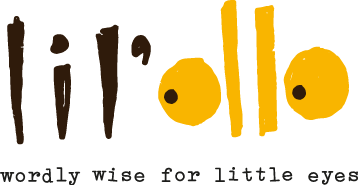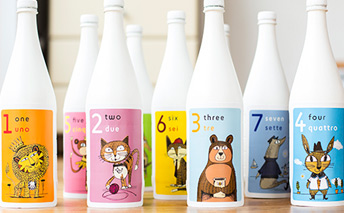
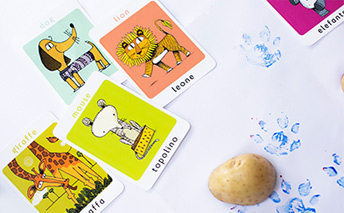
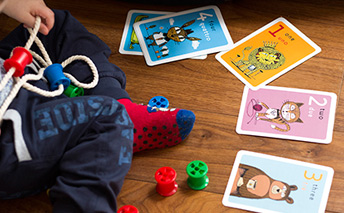
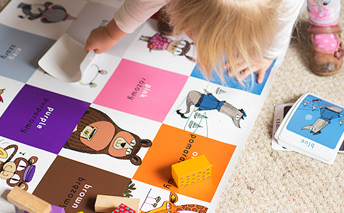
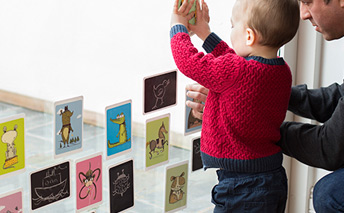
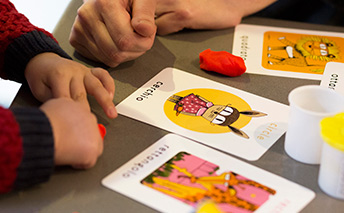
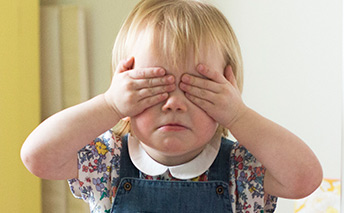

<
>
The Games Guide
We’ve developed our products and our characters to be fun, effective and easily accessible whilst also being open to different uses - speaking, listening, reading, learning through pictures, storytelling, songs, games, and on and on. Below you will find 13 ideas for games to play with your products. These and more will soon be available in a handy printed booklet.
We believe unstructured play indoors and out is really important but have found there are times in the day where some ideas for games are helpful. These games can be used in any language and we have noted which products may be most suitable for each game.
Many of these games involve every day objects you can find around your home and all assume constant adult supervision. Please take care when playing and avoid props that may cause harm such as choking.
Tell a story
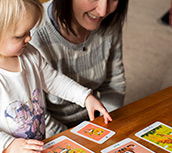
Stories can be told with any of our products. Pick a character and give him or her a name. Is she/he going on a journey? Does she/he meet another character along the way? What are they going to do?
Describe each character and what they are holding/ the colour behind them. Do they need to go into another room on their travels? How do they get there?
Super shapes
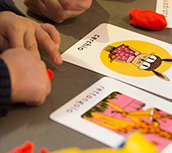
We tend to spend a lot of time looking in cupboards and drawers or running around outside. There are so many things in the house or outside that are different shapes.
Play a game where you find objects together that match the shapes on the cards or poster. You can also make shapes using card, pipe cleaners or play dough.
Skittles
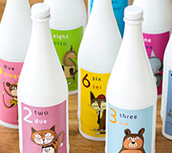
Save up empty plastic milk, water or juice bottles and secure any of the light flash cards on the empty bottles with elastic bands and play skittles (the Easy Tack cards will stick themselves).
Talk about what has been knocked over, and what is left standing. Older children may enjoy adding or subtracting with the number card skittles or just counting the bottles left standing.
Drawing games
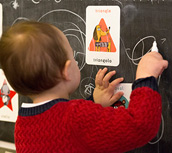
We stick the shapes cards up by the chalk board and draw shapes alongside them and the posters work just as well.
This can also be done anywhere with a pad of paper and some crayons/ pens/ pencils. Animals are also fun to draw but very little hands may need some help.
Singing
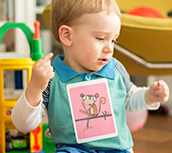
Most languages have an animal noises song and/or a numbers or counting song. Sing these with the cards or posters, or make up your own.
The animals may not match exactly with your song so you don’t need to use all of them. You may want to be creative and adapt the song slightly!
Hide and Seek
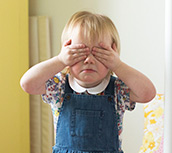
Hide cards around your home and try to find them together. For older children you could leave a clue with each card to find the next. At the end of the hunt there could be some hidden treasure!
Match the colour
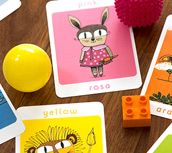
Using the colour cards or poster, go on a hunt around your home or wherever you are, and try and find things that match the colours on the card.
Every colour has an animal sitting on top. Also talk about the animals; where do they come from? Do they need to camouflage themselves?
Painting
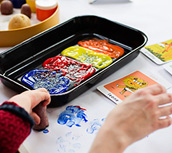
Painting is another great way to learn about colour. Under 3s may appreciate hand painting with coloured plain yogurt (use food colouring).
Lay out the cards or use a poster on the wall and see which colours you can mix. This can get messy - some paint will wipe off the cards but to be safe keep them out of arms reach if you can.
Counting
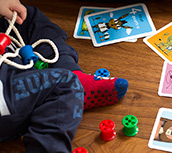
Attach the number cards to boxes/ drawers/ bags… anything you can count things into. We put them on boxes and drawers and count balls in but you can do this with anything you like (toys/ clothes/ shoes etc.)
This can double up as a fun way to tidy up! Alternatively lay the cards out and find toys or objects that match the number on each card.
Animal Tracks
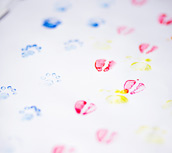
What kind of tracks does a chicken make? What kind of foot prints does a bear make? You could invent these and draw them or how about making potato cuts?
Sometimes the feet of plastic toys dipped in paint can make excellent foot prints across paper. Be careful they don’t end up across the floor too…!
Miming games
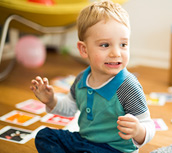
Can you pretend to be a cat? Or maybe a crocodile with all those sharp teeth? How about a dog or a bear? Using the posters or cards play a miming game and pretend to be an animal.
If you are using cards the animal could be kept secret from those trying to guess.
Animal eats

Using cards or a poster, find food at home or draw pictures of food the animals might like to eat. Talk about what the food tastes like and how might the animal eat it.
If you were to invite them for a meal, what would you cook for them?
Sensory boards
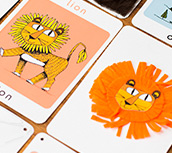
These work well with any of the cards or posters. Find different objects at home that relate to the animals - for example this could be a cheese wrapper for the mouse, some seeds for the chicken....
...wool for the cat, a balloon for the elephant wearing the party hat, a paper boat for the seal on the sea, some leaves for the giraffe...
Stick these to separate pieces or one big piece of card and match them to each animal, create stories or just talk about why they might like that particular object. Different textures are great for smaller children but please be aware of possible choking hazards.
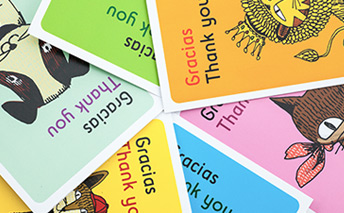
Thank you for visiting our Games Guide. If you would like to be kept updated when we add new games and when the printed guide is available, please sign up to our monthly newsletter here.
